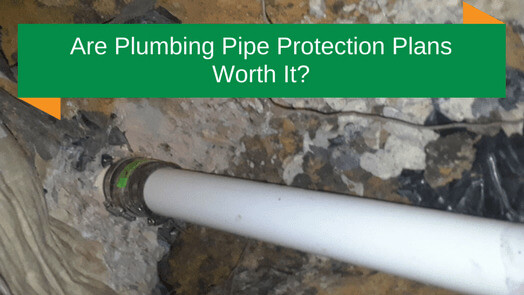
Recently we performed a sewer leak isolation test at a home in Plano. With our test we found two leaks, both in a Jack and Jill bathroom near the front of the house. One leak was at the tub and the other at the toilet. We then gave the homeowner an estimate based on our results.
About a week later we got a call from the homeowner. Turns out he had been paying a small yearly fee to a company that provides a plumbing pipe protection program.
This company is not in any way related or connected to his homeowner’s insurance policy, and it is not insurance. It’s a separate company that offers a plan that covers his under slab pipes kind of like a warranty.
When the homeowner called to find out if the repairs we recommended were covered by his plan, they sent a plumbing company to verify our findings. The plumber performed a sewer camera inspection and said there were no leaks but there were roots in the area where we found the leaks. And because roots in the pipes are a maintenance issue, it is not covered by his plan.
So of course, the homeowner called us back confused and wondering who was telling the truth.
What We Know About Sewer Camera Inspections
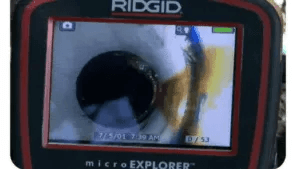
If you’ve followed our blog for any amount of time, you know how we feel about sewer camera inspections.
In short, sewer cameras can’t locate leaks.
In fact, we feel so strongly about this, it bears repeating. You cannot use a sewer camera to determine if there is a leak or to locate leaks. The only way to determine if you have a leak is with a hydrostatic sewer leak test. And the only way to find a leak or leaks is with a sewer leak isolation test.
Leak or No Leak?
So the company offering the pipe protection coverage, who gets a nominal yearly fee, sent a plumber out to verify our findings. And the plumber from the other company didn’t find any leaks when we found two.
There could be a few possibilities for this:
- The plumber from the other plumbing company inaccurately believes (as many do) that a sewer camera inspection is the right way to find sewer leaks
- Under slab repair is expensive so the coverage company will find any way they can to not have to pay for the repairs
- Our test was wrong
As to the first two, that’s speculation and we can’t really say.
But consider the fact that the other plumber said there were roots in the line. How would roots from outside of the sewer line get inside the pipe? There would have to be a be a break in the line. And what causes a leak? A break in the line.
In-House Company Values
Regarding the third possibility this is what we can say.
First and foremost, honesty and integrity in everything we do is of the utmost importance. After working for dishonest business owners in the past, Shawn started In-House with a commitment to run an honest company.
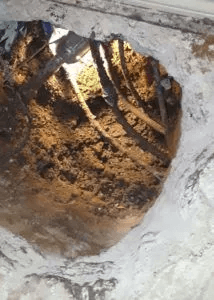 Shawn spoke with the homeowner on the phone for about 30 minutes to better understand what happened and discuss the homeowner’s concerns.
Shawn spoke with the homeowner on the phone for about 30 minutes to better understand what happened and discuss the homeowner’s concerns.
After explaining why it’s impossible to find a sewer leak with a camera inspection, Shawn then recommended the homeowner call the coverage company back and request a hydrostatic sewer test. And if they agreed, he offered to send a team member from In-House to be there on the homeowner’s behalf free of charge.
Additionally, Shawn explained that he is so confident in the original test results and his team that if In-House repairs the leaks and it turns out there are no leaks anywhere in the house, we won’t charge the homeowner for any unnecessary work done by In-House Plumbing Company.
You can read more information about our guarantee here.
Shawn also advised the homeowner that if the coverage company does end up covering the cost of repairs done by their approved company, he should get another hydrostatic sewer test done by a company he trusts to verify that ALL the leaks were repaired. It’s an unfortunate truth that many in the industry will go in, fix one leak, and leave.
And if all the leaks are not fixed, the homeowner could end up with potential foundation problems. This translates into, at worst, more money for a bigger repair down the line. And at least, more money for additional excavation and repairs.
Are Plumbing Pipe Protection Plans a Scam?
So what happened?
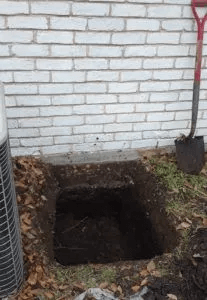
The homeowner followed Shawn’s recommendations and pushed back. The coverage company then asked to speak with someone from In-House.
They said the plumber they sent out should have done a hydrostatic sewer leak test and they don’t know why he didn’t. They called the other plumbing company who agreed to have another plumber come out to the house to do a hydrostatic leak test. And we agreed to come out for the test as promised.
They scheduled the test between 9 AM and noon. One of our team members, the plumber who did the original testing, got to the house a little before 9 AM to wait with the homeowner for the other company’s plumber.
Someone showed up a little before noon, a different plumber than the one who did the sewer camera inspection. He asked our guy what happened who told him about our original tests and the results.
The other plumber said OK, well if that’s what you found (two leaks) then that’s what we’ll tell the coverage company. He didn’t do the hydrostatic sewer leak test or even run another sewer camera in the line. He went back with our original results.
As you can imagine, this left us baffled and with questions. What would have happened if we hadn’t been there? Would he have done the test? And would he have been honest about it? Or did he and the coverage company know they had been “caught” so to speak?
But What About the Repairs?
The actual repairs themselves also turned out to be more difficult and confusing than they needed to be. Long story short, the plumbing company sent to do the repairs tunneled in from the outside of the house and found the leak at the tub but said the leak at the toilet was in a concrete beam.
He recommended work which cost well beyond what the protection plan provided and also lied to the homeowner about needing a permit from the city.
Before agreeing to the work, the homeowner called us and we discovered (by calling the city and asking) there was no need for a permit. We also went out to the house and found there was no leak in the beam but there was one a little further out from the toilet.
So we repaired the leak at the tub and also dug to the second leak and repaired it. We tested for leaks again and found there were no more leaks.
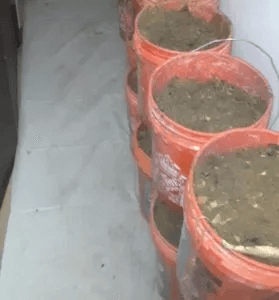
We told the homeowner to call the other plumbing company back and let them know they just needed to backfill the tunnel. The other company said they wouldn’t backfill the hole without an inspection and permit from the city and even then would only backfill what they dug. Meaning the little that we dug they would leave.
However, if they had done that, there would be no way to get to the part that we dug leaving a hole under the house. Or they would backfill to where we dug and leave. We would then have to go and backfill the small portion we dug. And then the other company would have to come back and backfill the rest. In either case, the homeowner is left greatly inconvenienced.
The homeowner called us again so we decided to just backfill the entire tunnel.
So in the end, we have to wonder about the companies offering these “protection plans” and the plumbing companies working with them.
What would have happened if we hadn’t been involved?
Would the homeowner still have leaks? If the plumber had found leaks, would the homeowner have been charged for unnecessary work?
Without our help in this case, the coverage company and possibly the other plumbing company come out winners and the homeowner the loser.
Is this a case of ineptitude? Or is the whole thing a scam?
What do you think? Do you have a coverage plan for your pipes? And has it worked out for you? Let us know in the comments. We want to know!
You can also call us at 972-494-1750 or fill out the contact form on the Contact Us page.

